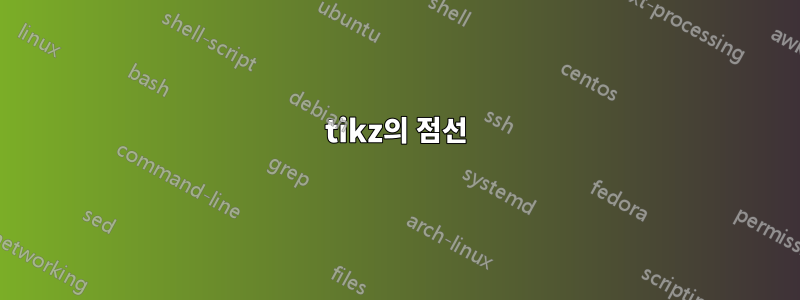
나는 이 그림에 대한 코드를 작성했습니다. 이 두 개의 대시를 어떻게 추가할 수 있습니까?

\documentclass{article}
\usepackage{tikz}
\usetikzlibrary{arrows,positioning,fit}
\usetikzlibrary{arrows,calc,positioning}
\usetikzlibrary{shapes,arrows,positioning,calc}
\begin{document}
\newlength\estilength
\settowidth\estilength{$estimator$}
\tikzset{
block/.style = {draw, fill=white, rectangle, minimum height=3em, minimum width=3em,text width=\estilength,align=center},
tmp/.style = {coordinate},
sum/.style= {draw, fill=white, circle, node distance=1cm},
input/.style = {coordinate},
output/.style= {coordinate},
pinstyle/.style = {pin edge={to-,thin,black}
},
point/.style = {draw, fill=black, circle, minimum size=0.8mm, node distance=1.5cm, inner sep=0pt},
dashed node/.style={draw,dashed,inner sep=7.5pt,rounded corners},
}%
\begin{tikzpicture}[auto, node distance=15mm,>=latex']
\node [input, name=input] {};
\node [block, right=of input] (plant) {$controller$};
\end{tikzpicture}
\end{document}
답변1
이를 수행하는 방법은 다음과 같습니다.
특히 Tikz의 초보자라면 단계별로 수행하고 댓글에서 내 숫자를 확인한 후 다음 단계로 넘어가는 것이 좋습니다.불완전한에게괜찮아 (충분히).
내 의견을 넘어서는 몇 가지 의견:
- 절대 좌표를 사용하면 초보자로서 더 많은 제어가 가능합니다. 나중에
positioning라이브러리나 다른 도구 로 이동할 수 있습니다. - 항상 간단하게 시작합니다(예
\draw (A) -- (B);: 직선). 나중에 다듬습니다\draw (A) |- (B);(예: 수직, 수평 연결). - 스타일을 사용하여 코드를 더 읽기 쉽게 만드세요
- 중간점 도입(예: 상대 좌표
+()또는 새로운 절대++()좌표) - Tikz는 경로 개념을 사용하여 구문적으로 로 시작하고
\로 끝나며;그 사이에 모든 작업을 수행합니다. - 그렇기 때문에 경로가 끝나기 전에
node(! 없이 ) 레이블을 배치할 수 있습니다.\ anchor노드에서 참조를 변경하는 데 사용하는 것이 좋습니다.center- 극좌표는 와 같은 좌표
(45:1)또는 노드 모양 주위의 친구가 될 수 있습니다.(A.north) == (A.90)
행운을 빕니다. + 다음 명령을 찾아보세요.tikz 매뉴얼병행하여.
\documentclass[10pt,border=3mm,tikz]{standalone}
% ~~~ (4) replace arrow tip ~~~~~~~~~~
\usetikzlibrary{arrows.meta}
\begin{document}
\begin{tikzpicture}[ % ~~~ (2) doing some style ~~~
blk/.style={draw,minimum height=1cm,minimum width=3cm},
LL/.style={line width=3pt, draw=blue!70!green!40},
>={Triangle}, % ~~~ (4) replace arrow tip ~~~~~~~~~~
]
% ~~~ (1) putting a node ~~~~~~~~
\node[blk] (C) at (0,0) {controller};
% ~~~ (3) drawing the blue line ~~~~~~
\draw[->,LL] (6,1.5) -| (C);
% ~~~ (5) left indicator ~~~~~~~~~~~~
\draw[dashed] (C.120) -- ++(100:3) -- +(-4,0)
node[anchor=south west] {distributed controller};
% ~~~ (6) right indicator ~~~~~~~~~~~~
\draw[dashed] (2,1.5) -- ++(45:2) -- +(4,0)
node[anchor=south east] {communication topology}
node[anchor=north east,pos=.6] {delay}
;
\end{tikzpicture}
\end{document}



